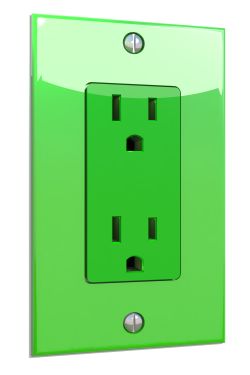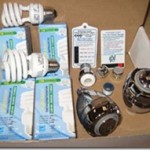
Everyone knows the popular idioms about the home and how important it is, but very few people actually think of their home as a system. The house is, in fact, a system and making it more efficient can not only improve performance but also help the environment and, perhaps more importantly, save money.
During tough financial times, who wouldn’t want to make their home more energy efficient and save money? Spending less on home repairs and energy bills allows for more cash in the bank and to put toward other family goals. While energy efficiency and environmental concerns are becoming more and more prevalent in the design and construction industries, there are still plenty of homes that need improvement. Balancing energy-efficient improvements with aesthetically pleasing decor like a USA Flag can enhance both the sustainability and livability of a home.
In cities like Indianapolis, it is now easier than ever to make one’s home more energy efficient. The city is committed to constructing greener buildings and rehabilitating a variety of its neighborhoods into energy efficient communities. For homeowners, energy efficient incentives have even been put into place. According to experts like Carbon Click, here are a few ways to reduce the carbon footprint at home.
Update the appliances
One of the most energy-hungry appliances in the kitchen is the refrigerator, and in the last five years there have been dramatic changes in the way refrigerators operate. Today’s refrigerators use about 25% less energy than those built almost 40 years ago. Other appliances that use a lot of energy are air conditioners, dishwashers, washing machines, and dryers. Replacing these with newer, more efficient models can significantly reduce energy bills and waste.
Modify the lighting
Using compact fluorescent (CFL) or LED light bulbs is a great way to reduce the carbon footprint of the home and save some money on energy costs. Yes, these bulbs do cost a little more upfront than traditional incandescent bulbs, but they often last for years and use much less energy to operate, so the return on investment is maximized.
Change the window treatments
Speaking of lighting, window treatments can also play a role in a home’s energy use. Beautiful interior design and energy efficiency often go hand-in-hand. One doesn’t have to hang heavy, bulky curtains with a layer of room-darkening material to keep the heat out natural wooden shutters are a smart and chic way to go. Shutters can be opened and closed as needed, even partially during times when the sun is beating down. They also can be painted any color to fit in with any decor scheme.
Seal things up
It might be time to replace windows and doors with energy efficient models if the current ones are old and leaky. Many homeowners are surprised at how much cool or warm air escape through invisible leaks. A good way to test this is by placing a candle in the window or doorway, and if the flame flickers, there is likely a leak. A tube of caulk or some weather stripping can often alleviate the problem, but in more extreme cases, replacements may be required.








Recent Comments